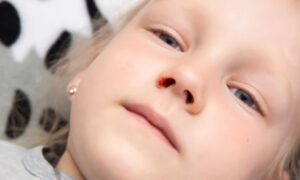Noticing white spots on a child's skin can be an alarming experience for parents. While these spots are often associated with vitiligo, they may also indicate a common skin condition known as pityriasis alba. Despite their superficial similarity, these conditions differ significantly in their causes, symptoms, and treatments. By understanding these differences, parents can better manage their child’s condition and seek appropriate medical advice when necessary.
Understanding the Two Conditions
What Is Vitiligo?
Vitiligo is a chronic skin condition characterized by the loss of skin pigmentation due to the destruction or dysfunction of melanocytes, the cells responsible for producing melanin. This condition affects people of all ages, but its impact is often more pronounced in children and adolescents due to its visible nature.
- Types of Vitiligo:
- Segmental Vitiligo: Limited to one side of the body, usually appearing in childhood.
- Non-Segmental Vitiligo: The more common type, often symmetrical and progressive, with patches appearing in multiple areas.
- Risk Factors:
- Genetic predisposition.
- Autoimmune conditions like thyroid disorders.
- Environmental triggers, such as stress or skin injury.
What Is Pityriasis Alba?
Pityriasis alba is a benign skin condition that commonly occurs in children aged 3 to 16. It is characterized by dry, pale, or light pink patches, which often resolve without treatment. This condition is non-contagious and is believed to be associated with skin dryness and minor inflammation.
- Common Triggers:
- Excessive sun exposure.
- Atopic dermatitis or eczema.
- Poor skin hydration.
Q&A: Common Questions About Pityriasis Alba and Vitiligo
Q1: How can I tell if my child has vitiligo or pityriasis alba?
Look at the color and texture of the patches:
- Vitiligo: Bright white patches with sharply defined borders and no scaling.
- Pityriasis Alba: Light pink or pale patches with poorly defined edges and a dry, scaly surface.
Q2: Are both conditions permanent?
- Vitiligo: Typically chronic and may require long-term treatment to manage symptoms.
- Pityriasis Alba: Usually temporary and often resolves on its own within a few months to years.
Q3: Can these conditions be prevented?
- Pityriasis Alba: Keeping the skin well-moisturized and protecting it from excessive sun exposure can reduce the risk.
- Vitiligo: Prevention is challenging as it often has genetic or autoimmune triggers, but managing stress and maintaining overall skin health may help.
Q4: Does vitiligo affect overall health?
No, vitiligo is primarily a cosmetic condition, but it may be associated with other autoimmune disorders. A doctor may recommend screening for thyroid or other immune-related conditions if vitiligo is diagnosed.
Q5: Are these conditions contagious?
Neither vitiligo nor pityriasis alba is contagious. They cannot spread to others through physical contact or sharing items.
Q6: When should I consult a dermatologist?
If white patches:
- Grow in size or number.
- Are accompanied by other symptoms, such as hair loss or redness.
- Persist despite home care measures like moisturizing and sun protection.
Key Differences Between Pityriasis Alba and Vitiligo
1. Differences in Clinical Presentation
- Vitiligo:
- Patches are pure white with sharply defined borders.
- The skin appears smooth, with no scaling or rough texture.
- Hair within affected areas may lose its color and turn white (a condition known as poliosis).
- Pityriasis Alba:
- Patches are pale white or light pink and poorly defined.
- The surface often has fine scaling and a dry texture.
- Lesions may itch slightly but are generally asymptomatic.
2. Differences in Affected Areas
- Vitiligo:
- Affects exposed areas, such as the face, neck, and hands, as well as friction-prone areas like the elbows, knees, and waist.
- It can also occur in more sensitive regions, such as around the eyes, mouth, or genitals.
- Pityriasis Alba:
- Most commonly affects the face, particularly the cheeks.
- Occasionally appears on the upper arms, neck, and shoulders, particularly in children with dry or sensitive skin.
3. Differences in Pathology
- Vitiligo:
- Caused by an autoimmune response that damages melanocytes, leading to the complete absence of pigmentation in affected areas.
- No significant changes in the outer layers of the skin.
- Pityriasis Alba:
- Linked to mild inflammation, thickening of the stratum corneum (outer skin layer), and reduced melanin production.
- Often associated with dry skin and incomplete keratinization.
Treatment and Home Care Tips
Treatment Overview
- Vitiligo:
- Topical corticosteroids or calcineurin inhibitors.
- Narrowband UVB phototherapy for extensive areas.
- Skin grafting for severe cases.
- Pityriasis Alba:
- Regular moisturization with fragrance-free emollients.
- Sunscreen application to prevent discoloration.
- Mild topical steroids in cases of significant inflammation.
Home Care Tips
- Moisturize Daily: Hydrate the skin with gentle, non-irritating products.
- Avoid Triggers: Limit sun exposure and use sunscreen with SPF 30 or higher.
- Monitor Symptoms: Note any changes in the size or number of patches over time.
References
American Academy of Dermatology Association (AAD). "Vitiligo and Pityriasis Alba - Diagnosis and Treatment Overview."
Alikhan A, Felsten LM, Daly M, Petronic-Rosic V. "Vitiligo: A comprehensive overview part I." J Am Acad Dermatol. 2011;65(3):473-91.
Habif TP. Clinical Dermatology: A Color Guide to Diagnosis and Therapy. 6th ed. Mosby; 2015.
Leung AK, Barankin B. "Pityriasis alba: An overview." Pediatr Dermatol. 2020;37(4):649-655.
Taieb A, Picardo M. "Vitiligo." N Engl J Med. 2009;360(2):160-169.
Silverberg NB. "A practical approach to childhood hypopigmentation." Clin Pediatr (Phila). 2005;44(4):297-301.








